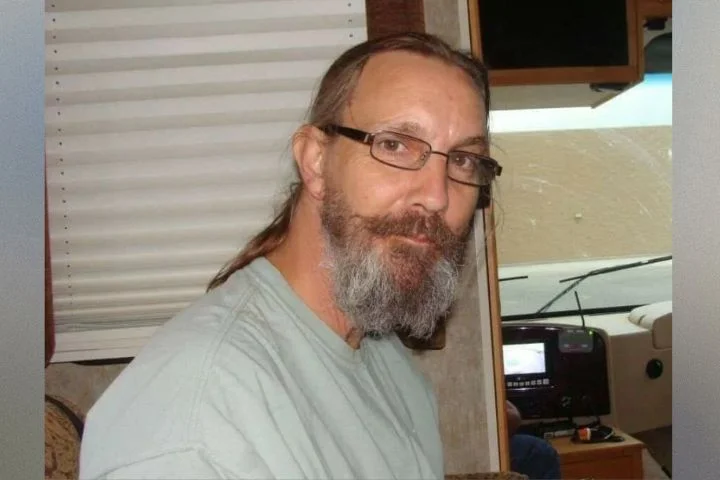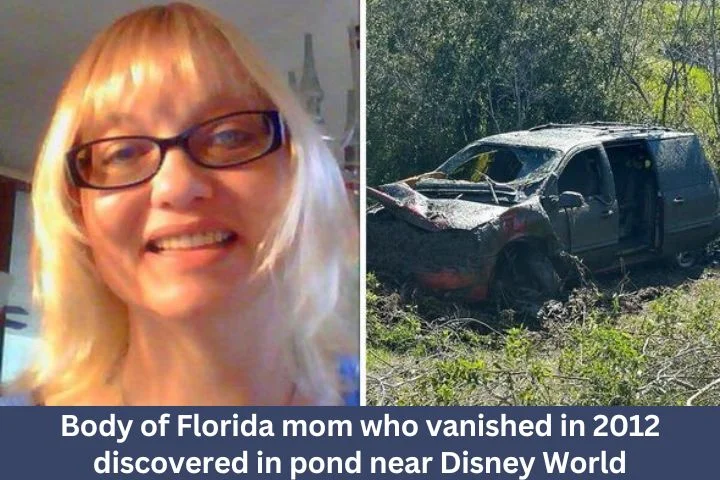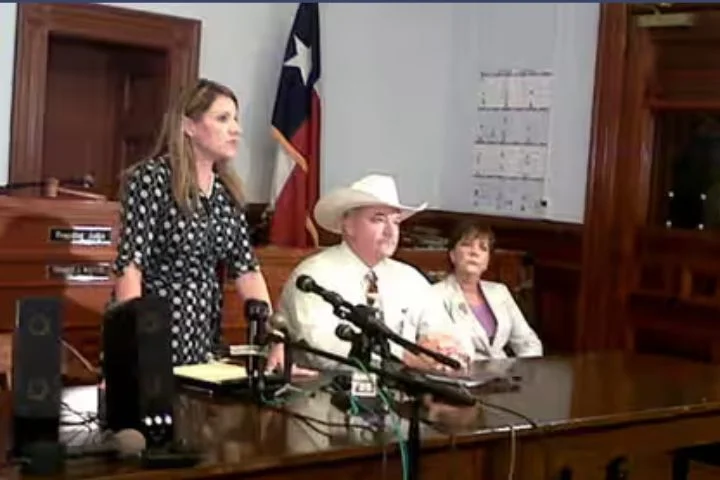51-year-old Mitchell Dale Stehling, went to the Mesa Verde National Park in Colorado on June 9, 2013, with his wife, Denean, and his parents. He said he was hiking to the Spruce Tree House ruin and left at 4.30 pm. The trail is less than a quarter of a mile long and connects to the Petroglyph Point Trail, a 2½-mile loop with cliff exposure that takes off from the Spruce Tree Trail. Witnesses saw him on that trail and spoke to him. However, he failed to return to his family.
Seven years later, on September 17, 2020, Dale’s remains were finally discovered by an anonymous person several miles from where he was last seen.
What happened to Dale that day in the national park? Was it a case of getting lost in the heat and without water, or was something sinister at play?
Background to the Stehling disappearance
The Stehling family left their home town of Goliad in Texas in a camper trailer and drove west, as Dale had always wanted to see Colorado.
Dale could spend hours tending to his garden and enjoyed walking near his home, but he was not an extreme adventurist. He was also a keen camper, so a day trip to Mesa Verde National Park with some downtime seemed the perfect idea to get into the great outdoors.
Initially, they only planned to drive out to the lookout point and take in the scene from a distance since the trail was rugged, and since Denean was overweight and Dale’s parents were elderly, it would not have been possible for them to hike it easily. But keen to see the beauty of Mesa Verde, Dale Stehling had to get a closer look.
The hike to the top of the trail should have taken around an hour, but at 4.08 pm, it was pretty hot; temperatures in the park were in the 90 to 100-degree Fahrenheit (32-35 °C) range. The terrain consisted of steep canyons and mesa tops at an elevation between 6,500 and 8,000 feet.
About Mesa Verde National Park

Mesa Verde (Spanish for “green table”) National Park is an American national park and UNESCO World Heritage Site in Montezuma County, Colorado. The park protects some of the best-preserved Ancestral Puebloan archaeological sites in the United States. Mesa Verde was the first national park of its kind, and it was established in 1906 by President Theodore Roosevelt to protect the legacy of the Puebloans who lived in the area for over 700 years.
The park occupies 52,485 acres (21,240 ha) near the Four Corners region of the American Southwest. With more than 5,000 sites, including 600 cliff dwellings, it is the most significant archaeological preserve in the United States. The park is best known for structures such as Cliff Palace, thought to be the largest cliff dwelling in North America.
Starting c. 7500 BC, Mesa Verde was seasonally inhabited by nomadic Paleo-Indians, known as the Foothills Mountain Complex. Later, Archaic people established semi-permanent rock shelters in and around the mesa. By 1000 BC, the Basketmaker culture emerged from the local Archaic population, and by 750 AD, the Ancestral Puebloans had developed from the Basketmaker culture. By the end of the 12th century, they began constructing the massive cliff dwellings for which the park is best known. By 1285, following a period of social and environmental instability driven by severe and prolonged droughts, they abandoned the area. They moved south to Arizona and New Mexico locations, including Rio Chama, Pajarito Plateau, and Santa Fe.
The disappearance of Dale Stehling
On that day, he disappeared, and his family quickly reported him missing. At first, the rangers thought he had gotten off track, and they told his wife to give him a couple more hours. “The park never had a person go missing for more than a couple of hours,” said Betty Lieurance, park public information officer.
When he had not returned two hours after he started on the Spruce Tree House hike, an intensive two-week search began that, at its peak, included 60 searchers, two dog teams, helicopter surveillance, and rope teams that rappelled off cliffs in the Chapin Mesa area. The K-9 team initially showed interest in the region in the first days of the search.
The Petroglyph Point Trail follows a cliff base before ascending to the mesa via steep, switchbacking sections with steps cut into the rock.
The day he disappeared was sweltering, and he didn’t have any water with him, but he did have a cellular phone. No one got any response or pings from it after his disappearance. Phone records showed that he tried to access his voicemail at about 7 pm that night.
He wore a Khaki Mesa Verde Museum Association Baseball cap, brown tee-shirt, tan/khaki shorts, calf-height white socks and Red Wing Oxford walking boots. He also carried his wallet and some cigarettes.

According to Patrick O’Driscoll of National Park Services Media Services (intermountain region), other than the main trails, the majority of Mesa Verde is uncharted territory that is off-limits to hikers.
Jesse Farias, chief ranger for Mesa Verde National Park, said the area has been heavily searched, but with no results, “In November, we had a dog team come in and search that area again for human remains, but they did not pick up any hits. When we have search-and-rescue exercises, we go there and continue to look but have not found him.”
The authorities said no foul play was suspected. “My gut feeling is that he is out there somewhere and never left the park. There is no reason to think otherwise – there have been no sightings. The case is still open.” Not one physical clue has been found and he is presumed to have died in the wilderness.
The park never closed the case on Stehling and still continues to look for him in a limited continued mode, meaning, if a ranger is in the park, he or she will keep in mind that there is an unfound body in the park and be aware of any evidence that may lead to his recovery.”
Chief Ranger Farias said a photo of Dale Stehling and notes about his disappearance remain on his wall. According to Farias, about five to 10 people go missing in the park yearly, but the case of Dale Stehling sticks with him.
Farias said the park extended efforts for months to find Stehling, which included calling in close to 100 people at a time to search, scaling cliffs and searching in park areas closed to visitors.
Many cliff areas in the park extend down to the Ute Mountain reservation filled with rocks, and Farias said if Stehling fell down a cliff, it would be almost impossible to see him from above or below it. “If he fell off a cliff, if he fell in between a rock area – unless you are looking straight down, even helicopters would not see him,” he said.
Authorities have shared case files with the family and keep them informed of search activity. But Denean doesn’t think the Rangers did enough to search for her husband. Rangers spent two days searching for Stehling before scaling back, she said. A news release cited a lack of evidence as to the reason. One year after he went missing, she said, “Now that it’s been a year, and the more I reflect on it, honestly, I’m just pissed off. Their attitude was: He was there, he was lost, and what are they supposed to do about it?”
But Farias counters Denean’s strong opinions, saying that rangers at the park searched for Stehling for about three months, mainly in a scaled-back mode, and continued to keep his disappearance on their radar. Their searches, he said, have and continue to cover a 3- to 5-mile radius around the trail he was last seen on.
Mrs Stehling, however, wanted the search to extend out of the small area as, despite her husband’s age, he could put more miles in a day than they thought, but nothing came of it.
Over the course of 2014, Denean returned to the park three times, expecting answers, expecting to find her husband, and expecting some closure, but each time she returned, nothing changed. She believes her husband went off the trail because of confusing signs in the park. Because she could not walk the trail, she fed her theory using the account of a family who’d last seen her husband on it.
The remains of Dale Stehling were discovered in September 2020
After seven years without a trace being found, Park Law Enforcement Rangers, with assistance from ISB and Montezuma County Coroner’s Office, finally found human remains at the National Park on September 17, 2020.
Mesa Verde National Park Superintendent Cliff Spencer said an anonymous tip the day before indicated the remains of Dale Stehling were in a remote section in the park, west of Durango. The tip did not provide an exact location, but its descriptions gave search crews a good idea of where it was.
Spencer said the body was found “quite a distance away” from where Stehling was last seen – around 4.2 miles. The area, which took search crews about two hours to reach, was searched in 2013 when Stehling went missing.
Montezuma County Coroner George Deavers said he is “99%” sure the remains are that of Mitchell Dale Stehling because of items found at the scene: a driver’s license, credit cards, and a Social Security card that had Stehling’s information on it.
Deavers said he is going to meet with a forensic anthropologist to examine the remains, looking for any signs of trauma or any clues that can explain the circumstances surrounding Stehling’s mysterious death. He also said that as of late September, foul play was not suspected, and it did not appear an animal attacked him.
Because the remains were just bones, Deavers said it was likely impossible to determine a cause of death unless Stehling had obvious signs of trauma, which he did not. “Just from what I saw, (I’d say) natural causes. But we’ll look everything over.”
It was unclear whether a DNA test was possible at the time of the discovery. The bones must retain some moisture to take DNA from a sample, and many of them found at the scene were bleached. If a DNA test is possible, Deavers said it would take about a year to get the results back.
He also said Dale’s remains were found by a hiker in an area that is closed to the public, at the bottom of a canyon, and it is believed that is where he died.
What happened to Dale Stehling?
At first sight, the case seems straightforward. Another case of outdoor misadventure – rocks, cliffs and heat can all be de*adly. Dale Stehling’s family appears to have gotten closure after a seven-year wait. His wife said Dale was “directionally challenged,” meaning he was unable to keep track of where he was, and that, together with the effect of heat, is the most likely cause of death in this case. He might have been misled by a sign pointing to the Chapin Mesa Archeological Museum and inadvertently went off trail. Once lost, it is easy to panic and head in a direction to get help, leading to further trouble.
However, questions remain about the circumstances of his disappearance and death.
The search for Dale was extensive and carried out over two weeks. It included 60 searchers, two dog teams, helicopter surveillance, and rope teams that rappelled off cliffs. Yet, he was missed, and it took seven years to locate the remains by an anonymous tipster. The sniffer dogs, could not detect a scent despite perfect weather for scent detection.
Moreover, Mesa Verde Park is relatively small, and the popular hike to the Spruce Tree House ruin is also reasonably straightforward. Other hikers report that you cannot easily get off-trail. Of course, the area is rugged, and it was hot when Dale disappeared. He was probably just missed with bad luck. But to end up 4.2 miles away from where he was last seen without water or supplies was quite a feat, but not impossible for a man of Dale’s age in a survival situation. 
Could foul play have been involved, or perhaps Dale was on a mission to find illegal souvenirs in an off-trail area?
On the National Parks Traveler site, Martha Elizabeth (Marcy) Stehling posted on May 19, 2023 at 8:39 pm.
“I’m Dale’s older sister. Every so often I google his name and just read articles, watch videos about his case. My family and I were devasted to lose Dale in such a weird way. On June 9, 2023, we mark ten years since he went missing. I’m still not over it. He was my best bud in the world. You raised some interesting questions.
I can clarify a couple of things, one is that Dale was not military, but our father was; we grew up as Army Brats from baby up. Dale did hike a lot, but really only in the pastures surrounding his home in the country. He was not, as I’ve seen elsewhere, a survivalist by any means, although he was pretty dang tough. He was physically disabled, due to a number of back surgeries that ultimately caused him to have a stooped over posture and a funny gait, but the man could walk for a long time, probably longer than the searchers would have thought.
I went out to Mesa Verde on June 9, 2014, and hiked the Petroglyph Trail.. alone. There were two places where I lost the trail. Somehow, I got off and then back on the trail, thank God, and also when I reached a certain point, I walked out of foliage into a big clearing with a solid rock ground and a cliff with a drop off that took my breath away. No guard rails. Also, I could not see where the trail picked up across the clearing, and stood still for a time just slowly looking around, until I spotted a little bitty pile of rocks stacked one on top of another; I walked over to it and immediately saw the opening for the trail. It was an emotional experience, and I no longer go alone into the wilderness. We were able to have services for my brother, and he is buried under a big live oak tree on his property in South Texas. I will miss him for the rest of my life.”






